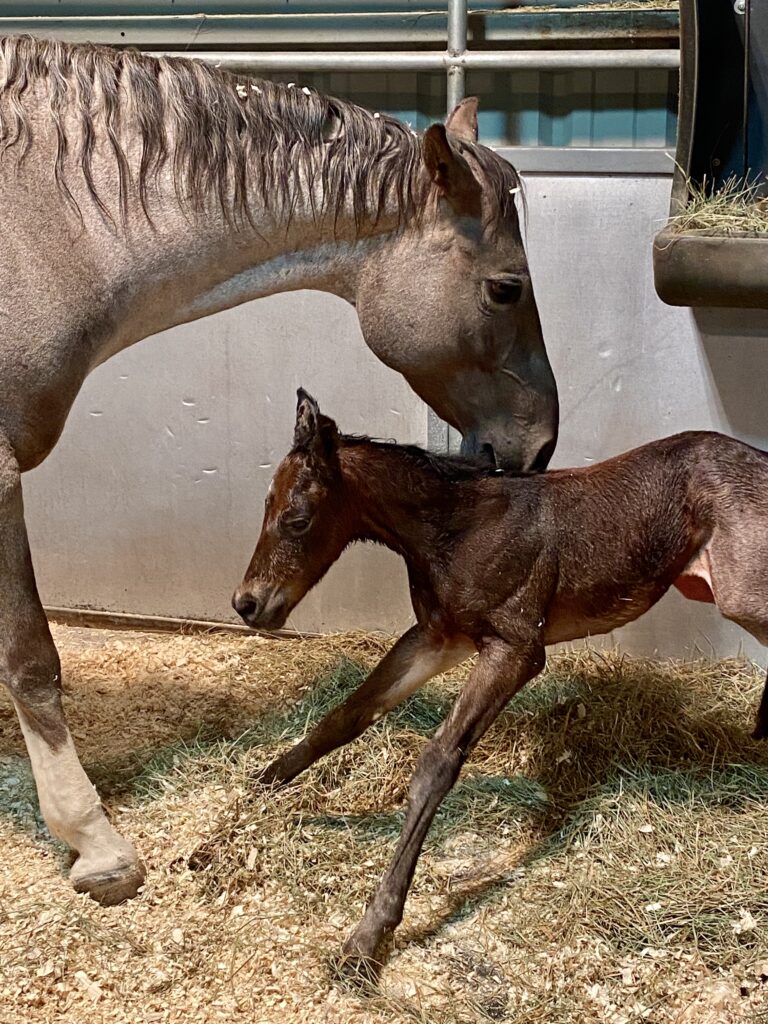While foaling season is an exciting time it can also be a bit stressful. Having the appropriate knowledge and tools to manage your mare through foaling, as well as how to best monitor and care for the foal during its first few hours of life, can help mitigate some of this stress. While most mares will foal out with little to no assistance, we recommend that all foalings are attended by trained personnel in case a problem arises.

Prior to foaling, mares will often show signs of restlessness that can resemble mild colic symptoms. Once the mare’s water breaks, strong uterine contractions will result in delivery of the foal within 20 minutes.
After successful delivery, the foal should be monitored to ensure that it reaches certain milestones. We often refer to these milestones as the “1-2-3 rule” of the newborn foal.
What is the 1-2-3 rule of foaling?
- A healthy newborn foal should stand on its own within 1 hour of birth. Healthy newborns are alert, responsive, and active. Some foals may need mild assistance to initially get their feet under them, but if a newborn foal is unable to consistently stand on its own or is unable to move around freely, contact your veterinarian.
- The foal should start nursing within 2 hours of birth. The newborn foal has low glycogen stores that only provide sufficient energy for a short period of time. It is necessary for the foal to suckle and nurse early in life, to replenish energy lost just after birth. Normal foals nurse about every 30 minutes. Failure to suckle or nurse is often one of the first signs of a problem in the neonate.
- The mare should pass the placenta within 3 hours of foaling.
The first few hours of life are critical for both mare and foal. Both should be monitored closely and if they fail to follow any of the foaling 1-2-3 rule, contact your veterinarian.
Once your foal has successfully followed the 1-2-3 rule, we recommend scheduling a new foal examination with your veterinarian between 12-24 hours after foaling. During that examination your veterinarian will perform a complete physical examination of the foal and take a blood sample to test immunoglobulin (Ig) G levels to ensure that the foal has adequate passive transfer of maternal antibodies from ingesting colostrum (mare’s first milk). The foal does not get any passive transfer in the womb. After you and your veterinary team have ensured your mare and foal pair are healthy, it’s time to enjoy watching your foal grow and change over the next days and weeks.
If you’re planning to foal out your mare at home, use our foaling kit checklist to ensure you have the right supplies on hand. If you wish to have your mare foal out at the CSU Equine Reproduction Laboratory, learn more about our foaling management services.